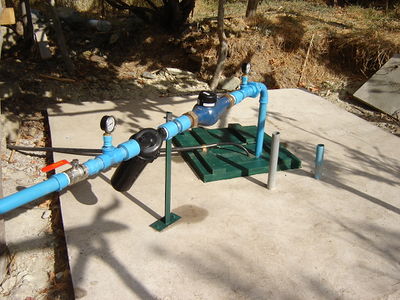Knowledge fuels change
For over a decade, Energypedia has shared free, reliable energy expertise with the world.
We’re now facing a serious funding gap.
Help keep this platform alive — your donation, big or small, truly matters!
Thank you for your support
SPIS Toolbox - Monitoring System

Introduction
Do want to know all about SPIS – Solar Powered Irrigation System : Please go to the newly launched standalone Solar Powered Irrigation Systems (SPIS) website (www.spis-toolbox.org) , featuring three SPIS toolbox:
- Toolbox for beginners,
- Toolbox for farmers (new SPIS Web based App – to calculate design of the pumps),
- the Toolbox for experts - the updated version - Version 6
and additional resources (Publication about SPIS).
The Toolbox on Solar Powered Irrigation Systems (SPIS) is designed to enable advisors, service providers and practitioners in the field of solar irrigation to provide broad hands-on guidance to end-users, policy-makers and financiers. Risks related to system efficiency, financial viability and the unsustainable use of water resources can thus be minimized. The Toolbox comprises informative modules supplemented with user-friendly software tools (calculations sheets, checklists, guidelines). read more
Modules and tools touch upon:
- assessing the water requirements,
- comparing the financial viability,
- determining farm profitability and payback of investment in SPIS,
- sustainably design and maintain a SPIS,
- highlight critical workmanship quality aspects,
- and many more.

style="width: 160px; background-color: rgb(111, 142, 43);" | ►Back to the Module Page
Monitoring system
Operated by the producer on-site or on-line, the monitoring system allows readings of pressure, water flow and water level and helps to assess the performance of the system.
It is used
- to observe and track the system’s operation and performance;
- to control pumping quantities to the irrigation system;
- to provide system data for the acceptance test after installation
- to avoid negative environmental impacts (e.g. ground water depletion).
Ultimately, monitoring is important to ensure that the system operates within sustainable limits for long term productivity of the farm.
Some solar pump manufacturers have included monitoring systems in their product portfolios. Each SPIS should have a basic monitoring system comprising pressure gauges, a flow meter and a water level dipper. The water level dipper is a simple tool to check the water level in a well. Once the metal electrode reaches the water table, a light will flash and the exact value can be read from the dipper tape. Checking the water level several times over the course of the day gives an indication on the dynamic behavior of the well. The dynamic water level is an important parameter to determine the total pumping head (refer to DESIGN module).
Especially in cases where the water is pumped directly to the irrigation system without passing through an elevated reservoir, it is important to monitor water flow and pressure in the irrigation system as the amount of water delivered to plants may vary widely across the field. The picture below displays a monitoring system, which is composed of a water flow meter and pressure gauges on each side of the filter, which allow the monitoring of the pressure loss through the filter.
A more sophisticated monitoring system would include sensors to measure
- solar irradiance (e.g. on horizontal and inclined surface);
- rainfall, relative humidity and wind speed;
- the total pumping head.
In addition, the monitoring system can be expanded with sensors in the reservoir and in the irrigation system itself. More sophisticated (and expensive) monitoring devices may include automatic data logging. The data logger continuously records and stores all system parameters over a longer period of time. Special evaluation software allows for quick data analysis on site. In remote areas not connected to the public grid, data loggers are usually solar-powered and may even include modern communication devices (GSM) with the option of checking system performance via smart phones (also refer to the MAINTAIN module).




















